#friederike von baden
Text
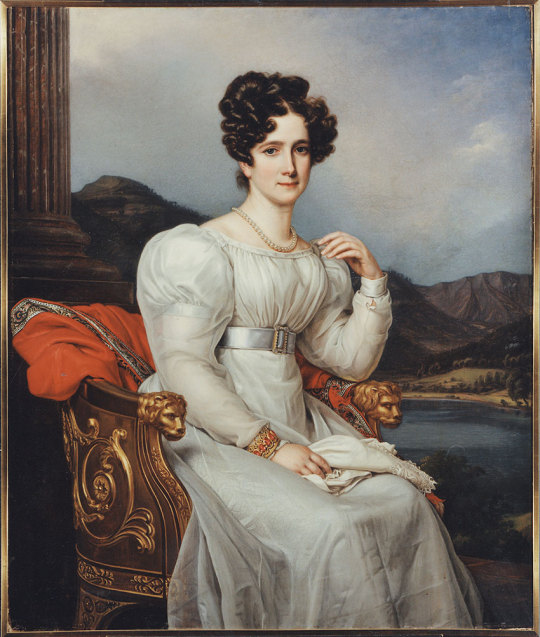
Fredrika of Baden by Joseph Karl Stieler (oil on canvas, 1826)
Fredrika Dorotea Vilhelmina of Baden was born on 12 March 1781 in Karlsruhe. King Gustav IV Adolf married her at Stockholm Palace Chapel on 31 October 1797.
The marriage was initially described as a happy one, but they divorced in 1812 – the first and only time a Swedish king and queen have divorced.
They broke up following the king's loss of Finland after the Finnish War in 1809. King Gustav IV Adolf was then arrested, deposed as king and expelled from Sweden.
Fredrika has given her name to the Norrland towns of Fredrika, Dorotea and Vilhelmina. This part of southern Swedish Lappland is unofficially known as Drottninglandet ('Queenland') in her honour.
Photo: Nationalmuseum
#swedish royal family#queen fredrika#friederike von baden#frederica of baden#prinzessin friederike von baden#princess frederica of baden#friederike dorothea wilhelmine von baden#prinzessin friederike dorothea wilhelmine von baden#house of zähringen#art history#official portrait#swedish royalty#swedish history#royal history#fun fact: most of my ancestors are from those three towns so technically I can brag about my roots being queen-like
7 notes
·
View notes
Photo


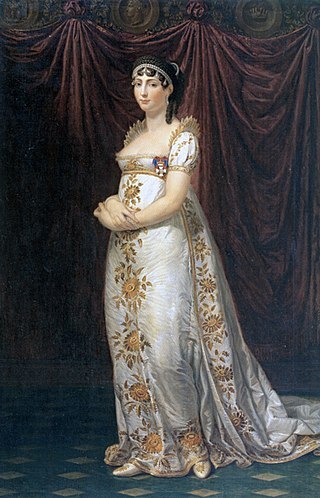

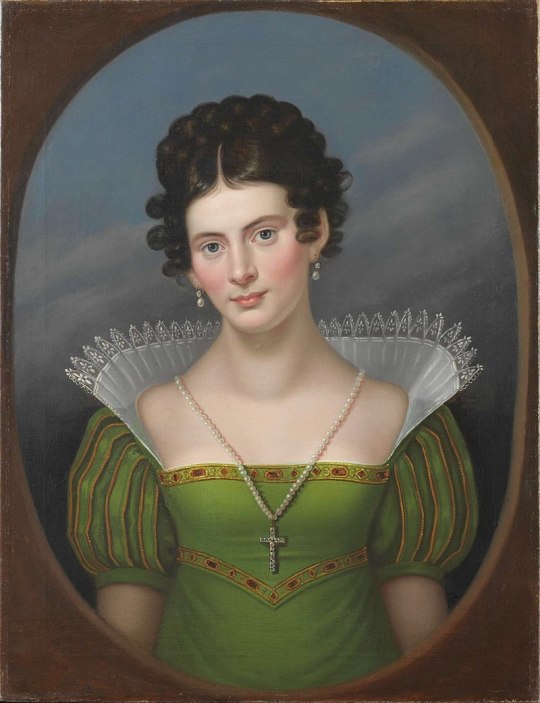



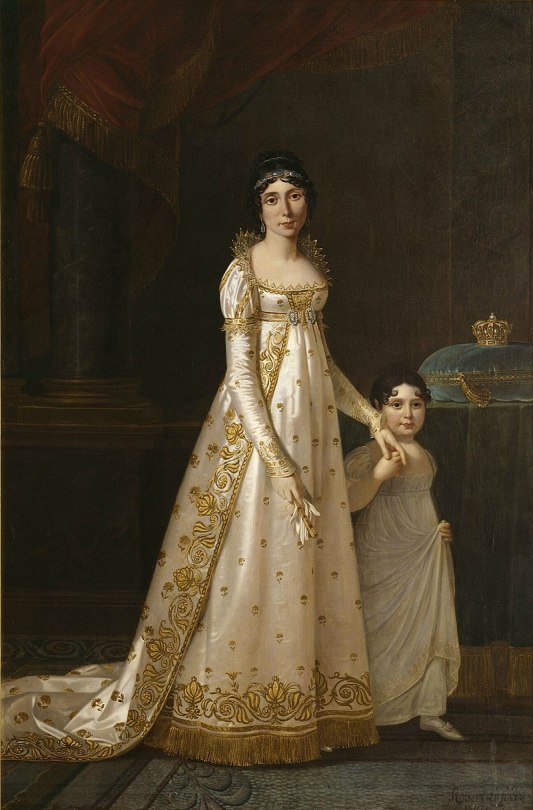

Cherusque (collar) or cherusse: Lace border on neck of women’s decollete gowns or starched lace collarettes of court costume. Directoire and First Empire (1790-1815 CE)
Josephine, Queen of Italy by Andrea Appiani
Karoline Königin von Bayern
Princess Augusta of Bavaria, 1807
The Honourable Mrs. Graham by Thomas Gainsborough (18th century)
Portrait of Dorothee van Herzselle by Caroline Bardua
Elizaveta, wife of Tsar Alexander I by Mosnier
Portrait of Princess Karoline Friederike Wilhemine von Baden (ca 1817) by the circle of Johann Christian von Mannlich
Joséphine de Beauharnais by Henri-François Riesener
Julie Clary, Queen of Naples, with her daughter Zenaide Bonaparte
Maria Sukhovo-Kobylina by C.F.Muller, 1814
#fashion#empire fashion#18th century#18th century fashion#19th century#19th century fashion#regency#regency fashion#cherusque#court dress#i love these#ruffs#medici collar
330 notes
·
View notes
Photo
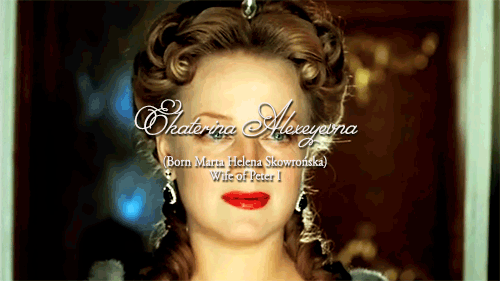
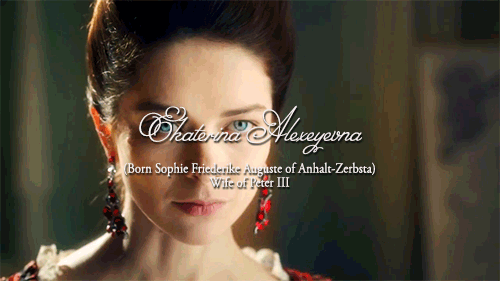

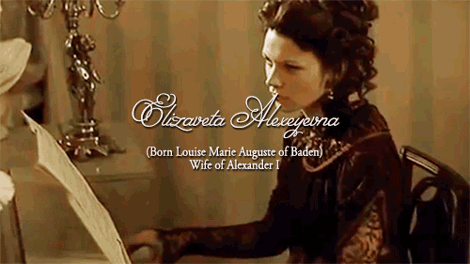
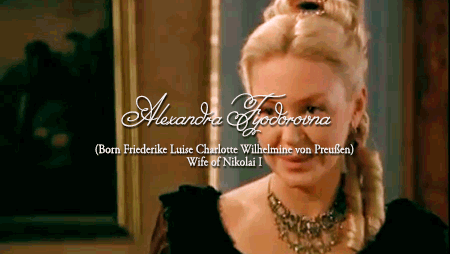
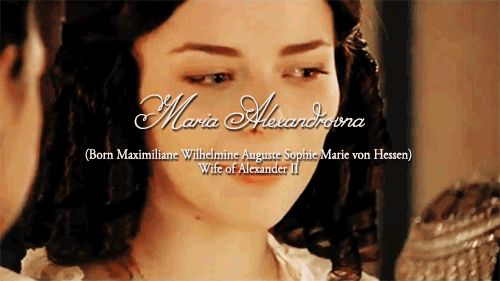
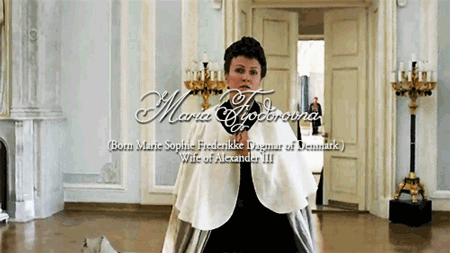
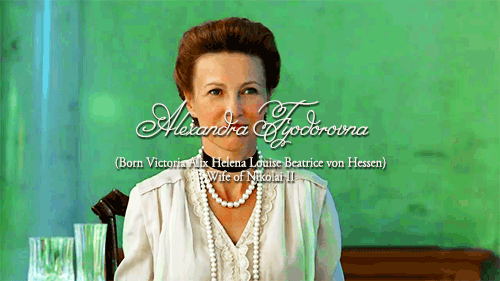
EMPRESS-CONSORTS OF RUSSIA
Ekaterina Alexeyevna (born Marta Helena Skowrońska). Married Tsar Peter I on February 19, 1712. Became Empress(-Consort) when Peter I took on the title of Emperor in 1721. After her husband’s death on January 28, 1725, she became Empress-Regnant, known as Catherine I, until her death on May 6, 1727.
Ekaterina Alexeyevna (born Sophie Friederike Auguste von Anhalt-Zerbst-Dornburg). Married Grand Duke Pyotr Fyodorovich on August 21, 1745. Empress-Consort to Peter III (January 5 1762 – July 9, 1762). After leading a coup d’etat that saw the abdication and assassination of her husband, she proclaimed herself Empress-Regnant and ruled as an autocrat for 34 years until her death.
Maria Fyodorovna (born Sophie Dorothea of Württemberg). Married Grand Duke Pavel Petrovich on September 26, 1776. (She was Paul’s second wife. His first wife, Natalia, had died in childbirth.) Empress-Consort to Paul I (November 17, 1796 – March 23, 1801). After Paul I’s assassination in a coup d’etat, Maria retained her status of the first lady of the empire, outranking the Empress-Consort Elizaveta Alexeyevna. She outlived not only her husband, but several of her children, including Emperor Alexander I and his wife, and died at age 69 in 1828.
Elizaveta Alexeyevana (born Louise Marie Auguste of Baden), Married Grand Duke Alexander Pavlovich on September 28, 1793. (They were both very young - 14 and 15 years old, respectively.) Empress-Consort to Alexander I (March 24 1801 – December 1, 1825). She outlived her husband by 5 months.
Alexandra Fyodorovna (born Friederike Luise Charlotte Wilhelmine von Preußen). Married Grand Duke Nikolai Pavlovich on July 13, 1817 (incidentally her birthday.) Empress-Consort to Nikolai I (December 1, 1825 – March 2, 1855). She outlived her husband by 5 years.
Maria Alexandrovna (born Maximilianne Wilhelmine Auguste Sophie Marie von Hessen). Married Grand Duke Alexander Nikolaevich on April 28, 1841. Empress-Consort to Alexander II (March 2, 1855 – June 3, 1880).
Maria Fyodorovna (born Marie Sophie Frederikke Dagmar of Denmark). She was originally engaged to Tsesarevich Nikolai Alexandrovich, her future husband’s older brother, but Nikolai died of meningitis before their wedding. Maria married Grand Duke Alexander Alexandrovich on November 9, 1866. Empress-Consort to Alexander III (March 13, 1881 – November 1, 1894). She outlived her husband by 34 years; she also survived the Russian Revolution and died in Denmark in 1928.
Alexandra Fyodorovna (born Victoria Alix Helena Louise Beatrice von Hessen). Married Nikolai II on November 26, 1894 and was Empress-Consort from that day until March 15, 1917. She was assassinated with the rest of her family on July 17, 1918.
#perioddramaedit#russian empire#Russia#historyedit#romanovs#grigoriy r#poor nastya#tdp#catherine (2014)#mathilde#poor poor paul#empress consorts of russia#op#my gifs
247 notes
·
View notes
Text
Master Post of German & Austrian Nobles and Royals
Royal and Noble Houses
House of Coburg (Cadet branch of the House of Wettin)
Princess Alice of Great Britain and Ireland, The Grand Duchess of Hesse and by Rhine
Princess Charlotte of Belgium, The Empress of Mexico
Princess Louise of Saxe-Gotha-Altenburg, The Duchess of Saxe-Coburg-Saalfeld, (1st marriage)
Princess Mary of Teck, The Queen of the United Kingdom & British Dominions, The Empress of India
Princess Stéphanie of Belgium, The Crown Princess of Austria, Hungary and Bohemia
Princess Victoria of Great Britain and Ireland, Princess Royal
Queen Victoria of the United Kingdom (wife of Prince Albert of Saxe-Coburg and Gotha)
Princess Victoria of Saxe-Coburg-Saalfeld, The Princess of Leiningen, The Duchess of Kent
House of Habsburg
Anna Plochl, Countess of Meran
Princess Charlotte of Belgium, The Empress of Mexico, Archduchess of Austria
Infanta Eleanor of Portugal, Holy Roman Empress, The Archduchess of Austria
Eleonore Magdalene of Neuburg, Holy Roman Empress
Elisabeth in Bavaria, The Empress of Austria
Princess Elisabeth Christine of Brunswick-Wolfenbüttel, Holy Roman Empress
Queen Joanna of Castile, León and Aragon (Consort of Philip the Handsome, Archduke of Austria and The Duke of Burgundy)
Archduchess Johanna of Austria, The Grand Duchess of Tuscany
Kunigunde of Austria, The Duchess of Bavaria-Munich
Archduchess Maria Amalia of Austria, Electress of Bavaria, Holy Roman Empress
Archduchess Maria Anna of Austria, Princess of Lorraine and Bar
Princess Maria Anna of Bavaria, The Archduchess of Inner Austria-Styria
Archduchess Maria Antonia of Austria, The Electress of Bavaria
Archduchess Maria Antonia “Marie Antoinette” of Austria, The Queen of France
Archduchess Maria Leopoldina, The Empress of Brazil, The Queen of Portugal and the Algarves
The Archduchess Maria Theresa (Maria Theresia) of Austria, Holy Roman Empress
Mary, The Duchess of Burgundy
Princess Sophie of Bavaria, Archduchess of Austria
Countess Sophie Chotek of Chotkowa and Wognin, The Duchess of Hohenberg
Princess Stéphanie of Belgium, The Crown Princess of Austria, Hungary and Bohemia
House of Hanover (cadet branch of the House of Welf)
Princess Adelaide (Adelheid) of Saxe-Meiningen, The Queen of the United Kingdom and Hanover
Princess Caroline of Ansbach, The Queen of Great Britain
Princess Caroline of Brunswick-Wolfenbüttel, The Queen of the United Kingdom and Hanover
Princess Charlotte of Mecklenburg-Strelitz, The Queen of Great Britain, Ireland and Hanover
Frederica (Friederike) of Mecklenburg-Strelitz, The Queen of Hanover, The Duchess of Cumberland and Teviotdale (3rd marriage)
Princess Sophia Dorothea of Hanover, The Queen in Prussia
Queen Victoria of the United Kingdom
Princess Victoria of Saxe-Coburg-Saalfeld, The Duchess of Kent (2nd marriage)
House of Hesse
Princess Alice of Great Britain and Ireland, The Grand Duchess of Hesse and by Rhine
Princess Alix of Hesse and by Rhine aka Empress Alexandra Feodorovna of Russia
Princess Cecilie of Greece and Denmark, The Hereditary Grand Duchess of Hesse and by Rhine
Princess Elisabeth of Hesse and by Rhine, Grand Duchess Elizabeth Feodorovna of Russia
House of Hohenzollern
Princess Anna Amalia of Prussia
Princess Augusta of Saxe-Weimar-Eisenach, The German Empress
Princess Augusta Victoria (Auguste Viktoria) of Schleswig-Holstein, The German Empress
Princess Caroline of Ansbach, The Queen of Great Britain
Elisabeth Christine of Brunswick-Wolfenbüttel-Bevern, The Queen of Prussia
Princess Elisabeth Ludovika of Bavaria, The Queen of Prussia
Frederica (Friederike) of Mecklenburg-Strelitz, Princess Louis Charles of Prussia (1st marriage)
Princess Hermine Reuß, “German Empress”
Louise of Mecklenburg-Strelitz, The Queen of Prussia
Princess Maria Eleonora of Brandenburg, The Queen of Sweden
Princess Marie of Prussia, The Queen of Bavaria
Princess Sophia Dorothea of Hanover, The Queen in Prussia
Princess Victoria of Great Britain and Ireland, Princess Royal, The German Empress
Princess Wilhelmine of Prussia, The Margravine of Brandenburg-Bayreuth
House of Liechtenstein
Princess Sophie of Liechtenstein, Countess Esterházy
House of Mecklenburg
Princess Charlotte of Mecklenburg-Strelitz, The Queen of Great Britain, Ireland and Hanover
Elisabeth of Mecklenburg-Schwerin, Princess of Brunswick-Lüneburg aka Grand Duchess Anna Leopoldovna of Russia
Frederica (Friederike) of Mecklenburg-Strelitz, The Queen of Hanover
Louise of Mecklenburg-Strelitz, The Queen of Prussia
Therese of Mecklenburg-Strelitz, The Princess of Thurn and Taxis
House of Oldenburg
Princess Adelheid of Hohenlohe-Langenburg, The Duchess of Schleswig-Holstein
Princess Augusta Victoria (Auguste Viktoria) of Schleswig-Holstein, The German Empress
Princess Cecilie of Greece and Denmark, The Hereditary Grand Duchess of Hesse and by Rhine
Princess Sophie of Anhalt-Zerbst, The Empress of Russia aka Catherine the Great
House of Romanov (incl. Romanov-Holstein-Gottrop)
Princess Alix of Hesse and by Rhine aka Empress Alexandra Feodorovna of Russia
Princess Elisabeth of Hesse and by Rhine, Grand Duchess Elizabeth Feodorovna of Russia
Princess Sophie of Anhalt-Zerbst, The Empress Regnant of Russia aka Catherine the Great
House of Thurn and Taxis
Helene in Bavaria, The Hereditary Princess of Thurn and Taxis
Princess Marie Auguste of Thurn and Taxis, The Duchess of Württemberg
Therese of Mecklenburg-Strelitz, The Princess of Thurn and Taxis
House of Welf (without the British Hanover branch)
Princess Caroline of Brunswick-Wolfenbüttel
Princess Elisabeth Christine of Brunswick-Wolfenbüttel
Elisabeth Christine of Brunswick-Wolfenbüttel-Bevern
Elisabeth of Mecklenburg-Schwerin, Princess of Brunswick-Lüneburg aka Grand Duchess Anna Leopoldovna of Russia
House of Wettin (without the Coburg branch)
Princess Adelaide (Adelheid) of Saxe-Meiningen, The Queen of the United Kingdom and Hanover
Princess Amalie Auguste of Bavaria, The Queen of Saxony
Princess Feodora of Hohenlohe-Langenburg, The Duchess of Saxe-Meiningen
Princess Maria Anna of Bavaria, The Queen of Saxony
Sibylle of Cleves, The Electress of Saxony
House of Wittelsbach
Princess Amalie Auguste of Bavaria, The Queen of Saxony
Eleonore Magdalene of Neuburg, Holy Roman Empress
Elisabeth in Bavaria, The Empress of Austria
Elisabeth of Bavaria, The Queen of France
Princess Elisabeth Ludovika of Bavaria, The Queen of Prussia
Helene in Bavaria, The Hereditary Princess of Thurn and Taxis
Kunigunde of Austria, The Duchess of Bavaria-Munich
Princess Louise d’Orléans, Princess of Bavaria
Princess Ludovika of Bavaria, The Duchess in Bavaria
Archduchess Maria Amalia of Austria, Electress of Bavaria, Holy Roman Empress
Princess Maria Anna of Bavaria, The Archduchess of Inner Austria-Styria
Princess Maria Anna of Bavaria, The Queen of Saxony
Marie in Bavaria, The Queen of Two Sicilies
Princess Marie of Prussia, The Queen of Bavaria
Baroness Marie Louise of Wallersee, The Countess Larisch
Mathilde in Bavaria, The Countess of Trani
Sophie in Bavaria, The Duchess of Alençon
Princess Sophie of Bavaria, Archduchess of Austria
House of Württemberg
Princess Marie Auguste of Thurn and Taxis, The Duchess of Württemberg
Princess Mary of Teck, The Queen of the United Kingdom & British Dominions, The Empress of India
Princess Sophie of Württemberg, The Queen of the Netherlands
The Ottonians
Adelaide of Burgundy, Holy Roman Empress, Queen of Italy
Theophanu, Holy Roman Empress
Other (Minor) Nobles and Royals
Anna Constantia of Brockdorff, Imperial Countess of Cosel
Anne of Cleves, The Queen of England
Dunkelgräfin [Dark Countess] aka Sophia Botta
Princess Feodora of Leininigen, The Princess of Hohenlohe-Langenburg
Helene Baltazzi, The Baroness of Vetsera
Katharina von Bora, Mrs Luther
Baroness Louise Lehzen
Maria Anna Mozart, Imperial Baroness (of) Berchthold
Baroness Marie “Mary” of Vetsera
Marie Karoline of Mollard, Imperial Countess of Fuchs to Bimbach
Baroness Ottilie of Faber aka Countess Ottilie of Faber-Castell
Ottilie Richter, Baroness of Faber
Richenza of Northeim
Tropes
German Empresses
Princess Augusta of Saxe-Weimar-Eisenach
Augusta Victoria (Auguste Viktoria) of Schleswig-Holstein
Princess Hermine Reuß [Claimed titled without right]
Princess Victoria of Great Britain and Ireland, Princess Royal
Holy Roman Empresses
Adelaide of Burgundy, Queen of Italy
Infanta Eleanor of Portugal, The Archduchess of Austria
Eleonore Magdalene of Neuburg
Princess Elisabeth Christine of Brunswick-Wolfenbüttel
Elizabeth of Pomerania
The Archduchess Maria Theresa (Maria Theresia) of Austria
Richenza of Northeim
Theophanu
Ladies-in-waiting
Princess Sophie of Liechtenstein, Countess Esterházy
Mistresses
Anna Constantia of Brockdorff, Imperial Countess of Cosel
Fatima Kariman aka Maria Aurora (von) Spiegel
Maria “Mizzi” Kaspar
Baroness Marie “Mary” of Vetsera
Period Drama Fashion
see Master Post: Period Drama Fashion
Queen (Consorts) of England/The United Kingdom/Great Britain
Princess Adelaide (Adelheid) of Saxe-Meiningen
Anne of Cleves
Princess Caroline of Ansbach
Princess Caroline of Brunswick-Wolfenbüttel
Princess Charlotte of Mecklenburg-Strelitz
Princess Mary of Teck
Queen Victoria of the United Kingdom
Queens of the Iberian Peninsula
Queen Joanna of Castile, León and Aragon
Archduchess Maria Leopoldina, The Empress of Brazil, The Queen of Portugal and the Algarves
Siblings
The Children of Princess Victoria of Saxe-Coburg-Saalfeld
The Daughters of Caroline of Baden, The Queen of Bavaria
The Daughters of Princess Ludovika of Bavaria
Significant Non-Nobles
Louise Ebert (née Rump)
Margot Sauerbruch (née Großmann)
Sophie Scholl
65 notes
·
View notes
Text

Kaiserin Jelisaweta Alexejewna von Rußland (1779-1826) war gebürtig Prinzessin Luise Marie Auguste von Baden, Tochter des Erbprinzen Karl Ludwig von Baden und dessen Gattin, Erbprinzessin Amalie, geborene Prinzessin von Hessen-Darmstadt. Zu den Geschwistern der Prinzessin Luise zählte Friederike Dorothea von Baden, die später die Gemahlin des Königs Gustav IV. Adolf von Schweden wurde. Prinzessin Luise wuchs in einem warmen und familiären Umfeld auf. Die Fürstenfamilie lebte in bescheidenen Verhältnissen. Prinzessin Luise beherrschte Deutsch und Französisch und erhielt unterricht in Geschichte, Geographie, Philosophie, sowie französischer und deutscher Literatur. Als die Prinzessin 13 Jahre alt war, wurde bereits über ihre Zukunft entschieden. Kaiserin Jelisaweta Welikaja von Rußland (1729-1796) suchte eine Ehefrau für ihren Enkel, den zukünftigen Kaiser Alexander I. Pawlowitsch (1777-1825) und richtete dabei ihre Aufmerksamkeit auf die Prinzessinnen von Baden. Auf der Einladung der Kaiserin hin reiste die beiden Schwestern Luise und Friederike Dorothea im Herbst 1792 nach Sankt Petersburg. Die Kaiserin war von Luises Schönheit, Anmut und Charme beeindruckt. Luise ihrerseits fand gefallen an Alexander Pawlowitsch, der großgewachsen und gutaussehend war. Vor der Hochzeit lernte Prinzessin Luise Russisch, konvertierte zum russisch-orthodoxen Glauben und trug fortan den Titel und Namen Jelisaweta Alexejewna. Die Hochzeit fand am 28. September 1793 in Sankt Petersburg statt. Großfürstin Luise war für ihre Schönheit und ihre melodische Stimme bekannt. Ihr ovales Gesicht, ihre feinen Gesichtszüge und blauen Mandelaugen entsprachen dem Schönheitsideal dieser Zeit. Das gelockerte blonde Haar trug sie meist offen. Zudem hatte sie eine graziöse und anmutige Haltung. Luise, die von bescheidenen, aber familiären Verhältnissen kam, wurde erschrocken über die Pracht am russischen Hof. Sie bekam Heimweh und fühlte sich alleingelassen. Der einzige Halt am kaiserlichen Hof war ihr Ehemann. Am 12. März 1801 wurde Kaiser Pawel I. Petrowitsch von Rußland von Adligen Verschwören ermordet und sein Sohn, Großfürst Alexander Pawlowitsch, trat der Nachfolge auf dem Thron an. Im September 1801 wurde er und seine Gattin bei einem Prunkvollen Krönungszeremonie in Moskau als Kaiser Alexander I. Pawlowitsch und Kaiserin Jelisaweta Alexejewna von Rußland gekrönt. Aus der Ehe gingen zwei Töchter hervor, die allerdings in frühen Kindesjahren starben. (Gemälde datiert 1805 von Jean-Laurent Mosnier).
0 notes
Photo


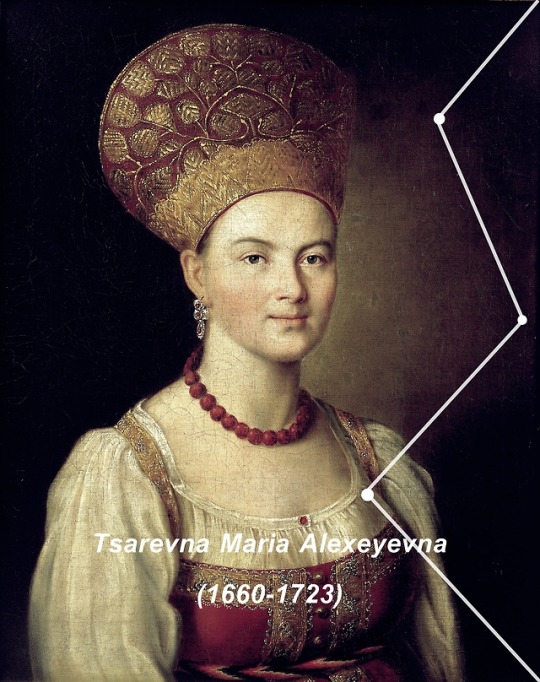

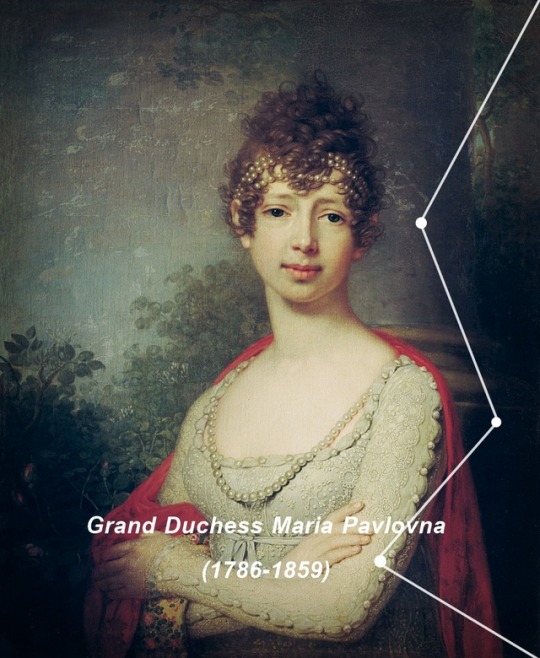
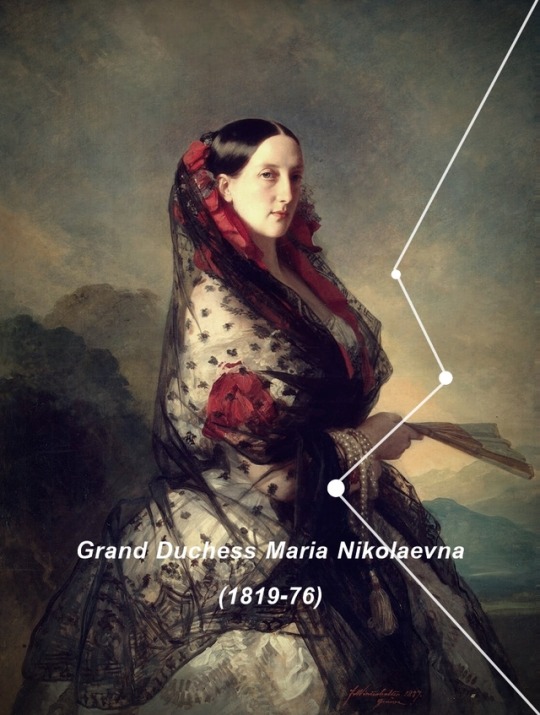
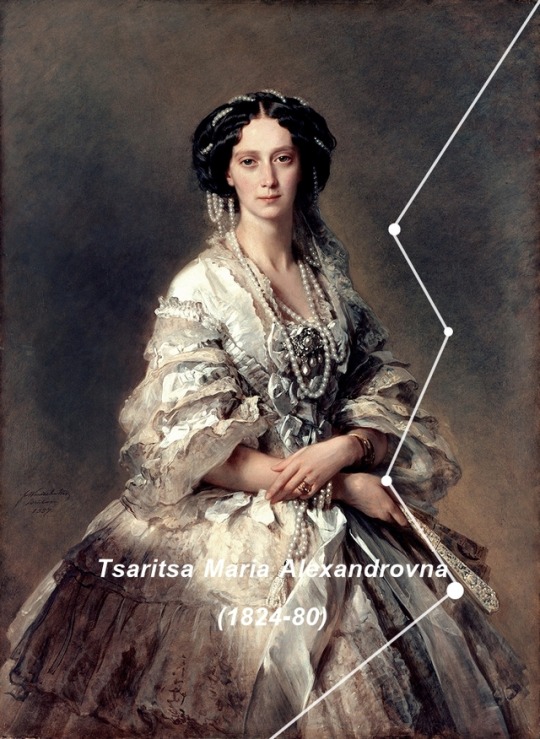


ROMANOV NAMES: Maria (part one)
Maria (rus.Мария) - a given name from derived from the Hebrew Miryām, which means “sea of sorrow “ or “wished for child”
Maria Miloslavskaya, the first spouse of Tsar Alexey, was the first woman from Romanov family to be called by name Maria at the same time.
Tsaritsa Maria Ilyinichna Miloslavskaya was born in 1625 as younger daughter of Russian boyar and diplomat, Ilya Danilovich Miloslavsky. Passed over, in first bride selection in favour of Euphemia Fedorovna Vsevolozhskaya, she was chosen by young Tsar Alexey few months later as his bride. It’s likely that behind Alexey’s choice stood Boris Morozov, an influental boyar and tutor to Tsar, who hoped to marry Maria’s sister and become his brother-in-law. Both couples were wedded on 16 January 1648 and new Tsaritsa conceived soon after that. Alexey and Maria produced 13 children in general, but 5 of them didn’t survived into adulthood. Maria fulfilled her duty in regard to religion and charity. She engaged herself in public dotations for poor and disabled children and benefited some monasteries. Unfortunately, her happy union with husband was ended by her death in childbirth on 1669. Her last child, weak Tsarevna Eudoxia didn’t outlived her mother and died only 1 day after birth.
Tsarevna Maria Alexeyevna was born on 28 January 1660 as the eighth child of Alexey I and his first spouse, above-mentioned, Tsaritsa Maria Milovskaya. She was not involved in politics, but her sympathy for first wife of his half-brother, Eudoxia Lopukhina didn’t made her popular and significant at Peter I’s court. Maria also took care of Alexei Petrovich, Peter and Eudoxia’s firstborn son, after his mother had been put into a nunnery against her will. When her nephew escaped from Peter’s tutelage, she helped him to maintain a contact with his mother. Some time later, she was accused of having prepared Alexei’s escape and taken in custody. Imprisoned and forgotten by all, Tsarevna died on 1723.
Tsaritsa Maria Fyodorovna was born 25 October 1759 as a daughter of Frederick Eugene II of Württemberg and his wife, Friederike Brandenburg-Schwedt. She was christened with name of Sophie Marie Dorothea Auguste Luise. Her parents gave her an excellent education; Sophie Maria had good command over Latin, German, Italian and French. In 1773 she was among a group of German princesses chosen as possible brides for Pavel I, but she was denied by Catherine the Great, in the view of her young age. In 1776 she was proposed as future bride for widowed Pavel I. Catherine was delighted with ideal of union between Pavel and Sophia Maria, mainly because she shared name, place of birth and similiar education with her future daughter-in-law. Wedding took place on September 1777. Sophia Maria converted to Ortodoxy and was given a name ‘Maria Fyodorovna’. Tall, thoughtful and rather plump woman was quickly dominated by her mother-in-law, but her marriage turned out to be a harmonious one, despite Pavel’s diffucult character and distrust. Generally, marriage resulted in ten children, including two future Tsars - Alexander I and Nicholas I. Except for Alexander and Konstantin, all her children enjoyed happy childhood by side of Maria. Between 1795 and 1806, seven members of her large family died in quick succession. Overshawdowed and overlooked during Catherine the Great’s reign, she became an influental figure during her sons’ reign and exerted tremendous influence over his younger sons’ lives and ways and involved herself in politcs and charity. Outlived by her assassinated husband and five of ten children, Maria was suffering humbly and passed away in 1828.
Grand Duchess Maria Pavlovna was born on 16 February 1786 as the fifth child of Tsar Pavel I, and his second spouse, Maria Fyodorovna. Rather not renowned for her beauty, Maria developed a precocious talent as pianist; her features had been misshapen by smallpox. In 1804, her brother arranged her marriage with Charles Frederick of Saxe-Weimar-Eisenach. They had four children, of which three survived childhood. Maria was not pleased with a low level of culture in in the poor Grand-Duchy of Saxe-Weimar-Eisenach, so she became a patron of arts and maintained a long-lived relationship with Vasily Zhukovsky, Johann Wolfgang von Goethe and Franz Liszt. On the advice of Maria, at Jena University, famous Literary Evenings were conducted. After death her husband, she withdrew from public life, what was contributed to her growing deafness. She died in 1784.
Tsaritsa Maria Alexandrovna was born on 8 August 1824 as the youngest daughter of Grand Duke Ludwig II of Hesse and his wife, Wilhelmine of Baden. Her legitimacy was conseted right from the very beginning due to her mother extramatrial relationship with August von Senarclens de Grancy. In 1839, young Tsasarevich Alexander Nicholaevich was travelling around Europe, looking for a wife. In Darmstadt he became capitaved by young, shy and withdrawn Princess Wilhelmina Maximiliana of Hesse-Darmstadt. But Nicholas I and his wife, Alexandra Fyodorovna expressed their disapproval for their son’s choice, as they learnt about questioned paternity of Grand Duke. But when Alexander informed them that he was considering about possible union between himself and Queen Victoria, the ultimate choice fell on Hessian princess. She converted to Ortodoxy and took a name ‘Maria Alexandrovna’. First years of marriage was happy, however Alexander was probably the most promiscuous Tsar of Russia ever and had different extramaterial relationships. He sired over 7 children out of wedlock. Frequent pregancies made it impossible for her to keep up with frivolous, rich Russian court, which literally adored her husband for his self-confidence and extraordinary charm. They started gradually to live apart. Maria was constantly ailling and suffered from weak lungs and therefore, she had to spent years abroad in order to treat herself. The birth of Pavel in 1860, left her with little strength and became clear that her health was in serious decline. It was advised by doctors that she was not supposed to share bed with Alexander any longer. Like many wives of unfaintful husbands, Maria sought for comfort in religion. By 1864 it was apparent that she had contracted consumption. She spent rest of her live in Sankt Petersburg mourning her first daughter, Alexandra and first-born son, Nixa who had passed away in 1864 of consumption. Maria was aware of his husband’s relationship with Ekaterina Dolgorukaya, which proved to more serious than his previous flings and resulted in 4 children. Maria died forgotten by all but her children on 1880.
Grand Duchess Maria Mikhailovna was born on 9 March 1825 as the first of five daughters of Grand Duke Mikhail Pavlovich and his spouse, Elena Pavlovna. Her father had always high hopes for her as the oldest daughter, though cherished and spoiled her greatly. Mikhail, who was eager to have son on his own, imposed upon her sense of duty and introduced her to the cavalry and infantry signals on the bugle and drum, but he also left Maria’s upbringing to his well-educated wife. Maria, who had been always suffering from weak health, died in her father’s arms in 1826.
Grand Duchess Maria Nicholaevna was born on 18 August 1819 as the second child of Tsar Nicholas I and his spouse, Alexandra Fyodorovna. Initially, her father was not thrilled at her birth as he had expected for a son, but quickly he became affectionate parent for her. She grew up into energic, out-spoken girl who lacked only sense of duty. From young years she showed interest in arts and was given a position of President of the Academy of Arts. In 1837 she fell in love with Maximilian, Duke of Leuchtenberg, who was grandson of late Empress Josephine, first wife of Napoleon Bonaparte, who had been defeated by Maria’s uncle, Alexander I. Maximilian was not considered as desireable partner for Grand Duchess, but talks were conducted and they were in 1838. They had seven children, who was granted with title of Dukes or Duchesses of Leuchtenburg and Princes or Princess Romanovsky/kaya. But years passed and couple started to live apart. In 1854 Maria made a second marriage to Count Grigori Stroganov which was kept in secret until death of Nicholas I. Her brother, Alexander II didn’t allow her to stay in Russia so she left her children behind, placing her own happiness over sense of duty. She died of varicose veins in 1876.
Tsaritsa Maria Fyodorovna was born as Maria Sophie Friederikke Dagmar, one of six children of Prince Christian of Schleswig-Holstein-Sonderburg-Glücksburg and his wife, Princess Louise of Hesse-Kassel on 26 November 1847. Alongside with her siblings, Dagmar lived an modest, quiet live in Copenhagen, because his father was only an unsignificant German-born prince from impovernished cadet line of family. But in 1852 her father was recognized as heir-presumptive to his childless uncle, Frederick VII, largely due to his wife rights for Danish throne as a niece of Frederick’s father. However, Christian’s new role change little in the live of Dagmar. Her family still resided in Yellow Palace, avoiding Danish court and court functions. Around 1864, Dagmar (or Minnie as she was generally known in her family circles) grew into a pretty, gentle young girl, who caught eye of Tsasarevich Nicholas, son of Alexander II, who was travelling across Europe. Nixa, as he was affectionally called, was handsome, wise and well-read men with large knowlegde. They became smitten with each other. Minnie became engaged to Nicholas, but her happiness turned out to be short-lived. Nixa, who had always been thought to be of robust health, fell down with consumption and was never to recover. Whilst lying on his deathbed, he wished that his bride be married to his beloved brother, stout and narrow-minded Alexander, nicknamed Sasha. In spite of initial reluctance of Alexander to be married to Dagmar, they had a close and free of extramatrial affairs relationship until his death in 1894. Young wife, who had taken a name ‘Maria Fyodorovna’ was an exemplary spouse and representant of ‘golden youth’. She won Russian people over and became renowned for her leniency, charm and good influence that she exerted over her husband. The marriage resulted in 6 children of which, 5 survived into aduldhood, including future Nicholas II. Upon assassination of his father-in-law, Alexander II, she became Tsaritsa, but lived isolated and sheltered in Gatchina due to fear of attempts of assassination. When her son, not mastered in arts of rule, Nicholas II ascended on the throne, she played a significant role as his adviser and fall afoul of her daughter-in-law, Alexandra Fyodorovna, shy, withdrawn and religious princess from Hesse. Maria, despite all efforts to understand Alexandra, never managed to trust her and get along with her. In 1899, she was deeply affected by premature death of her beloved son, Georgy, who had been living alone in Georgia due to his uncurable tuberculosis. As Dowager Empress, Minnie get involved herself in charity and still kept her position and respect. After the October Revolution, she settled down in Denmark and refused to believe in death of her sons, Nicholas and Mikhail and Nicholas II’s family at the hands of Bolsheviks. She passed away surrounded by her only alive children, Xenia and Olga, on 1928. She outlived all her sons (Alexander, Georgy, Mikhail, Nicholas)
(i used picture of Sophia Alexeyevna for Miloslavskaya and picture of unknown lady for Maria Alexeyevna)
410 notes
·
View notes
Text
Friederike Caroline von Baden, Königin von Bayern
Friederike Caroline von Baden, Königin von Bayern
Friederike Caroline, Königin von Bayern, um 1815
Quelle: StA Dlg, Pe 17-19, Samml Gebr Milz
Die Sammlung Gebrüder Hermann und Manfred Milz im Dillinger Stadtarchiv enthält eine Lithographie gefertigt von Joseph Karl Stieler (1781-1858). Diese stehende Lithographie zeigt Friederike Caroline von Bayern, geborene Prinzessin von Baden (1776 – 1841). Sie heiratete 1797 den verwitweten Herzog…
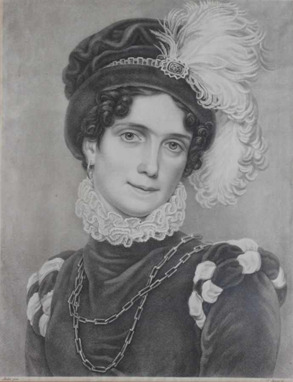
View On WordPress
0 notes
Text
Friederike Kempter erinnert sich gern an ihre Kindheit ohne Handy
Friederike Kempter erinnert sich gern an ihre Kindheit ohne Handy
Berlin (dts Nachrichtenagentur) – Schauspielerin Friederike Kempter hat ihre eigene Kindheit auf dem Land ohne Handy in Baden-Württemberg in bester Erinnerung. "Es war ein sehr guter Ort, um Kind zu sein", sagte sie der "Neuen Osnabrücker Zeitung" (Freitagausgabe). "Es war auch eine gute Zeit, um Kind zu sein – abgesehen mal von Tschernobyl, als wir auf einmal nicht mehr nach draußen durften", so…
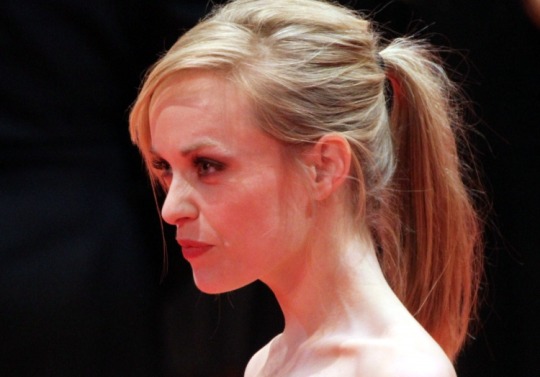
View On WordPress
0 notes
Photo
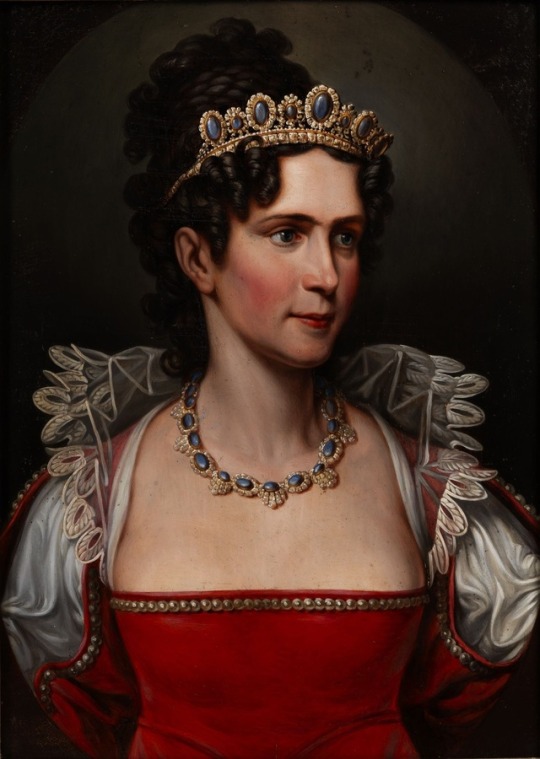
Johann Christian von Mannlich (Umkreis) - Bildnis der Prinzessin Karoline Friederike Wilhelmine von Baden
37 notes
·
View notes
Text
Als Puppendoktor wird jemand bezeichnet, der sich beruflich oder aus Passion mit der Reparatur oder Restauration von Puppen und Plüschtieren beschäftigt. Hauptsächlich werden Puppen aus Celluloid , Porzellan, Wachs, Holz und Stoff repariert.
Der Berufszweig entstand Mitte des 19. Jahrhunderts, als Puppen mit empfindlichen Wachs- oder Porzellanköpfen starke Verbreitung fanden. In Österreich und Deutschland waren es bis ins 20. Jahrhundert häufig auch Friseure oder Perückenmacher, die sich der Reparaturen von Puppen annahmen. Dieses lag vor allen Dingen daran, dass Puppen früher oftmals Perücken aus Echthaar besaßen.
Berufsbezeichnungen
Puppendoktor, Puppenrestaurator
Bulgarisch: кукла на сервиз, pеставратор на кукли Englisch: doll doctor, doll’s repairer, doll’s restorer Französisch: réparateur de poupées, restaurateur des poupées Italienisch: riparatore della bambola, restauratore di bambole Niederländisch: poppendokter Polnisch: lekarz lalek, osoba naprawiająca lalki Portugiesisch: reparador de boneca, restaurador das bonecas Russisch: брач кукол, ремонтник куклы Schwedisch: dockadoktor, dockaläkare Slowenisch: zdravnik lutka, restavrator za punčke Spanisch: reparador de la muñeca, restaurador de muñecos
verwandte Berufe: Puppenmacher
um 1880 [Franz v. Defregger]
Anzeige
(adsbygoogle = window.adsbygoogle || []).push({});
Puppen-Reparaturwerkstätten in Deutschland
Puppen- und Teddykliniken
.
Ob Kuscheltier, Spielzeug oder Sammlerobjekt: Teddybären und Puppen können nicht nur Kindern ans Herz wachsen. Und wenn das gute Stück einen Schaden erleidet, wenn ein Bein bricht oder ein Glasauge fehlt, ist es praktisch, eine Teddy- oder Puppenklinik in der Nähe zu haben. Rund 150 solcher Werkstätten haben wir ausfindig gemacht – Puppen- und Teddydoktoren ist kein staatlich anerkannter Beruf. Auffällig oft sind die Werkstätten im Süden ansässig, dort, wo die Spielzeugproduktion Tradition hat: in Baden-Württemberg, Franken, Thüringen und im Erzgebirge. Auch in Nordrhein-Westfalen sind sie verbreitet. Es werden übrigens nicht nur kostbare Porzellanpuppen oder Steiff-Bären zum Doktor getragen, manchmal braucht auch ein gewöhnlicher Teddy Hilfe – weil ein Kind so an ihm hängt, dass er unmöglich in einer Kiste verschwinden kann. Einen pädagogischen Effekt hat der Gang zum Doktor, der Puppe oder Teddy praktisch immer retten kann, wohl auch: Er nimmt Kindern die Angst vor dem echten Arzt.
[Friederike Milbradt – ZEITmagazin, 40/2016]
Puppenklinik Nürnberg – ‘Rose Weihreters Sorgenkinder’
Dies & das
Ersatzteile
Reklamemarke – um 1920
[handmade by unknown]
Früh übt sich …
um 1920, Frankreich
1939, Frankreich
um 1955
Puppendoktor Pillermann [Paula Dehmel]
um 1920, England
.
Ach lieber Doktor Pillermann, sieh dir mal bloß mein Püppchen an,
drei Tage hat es nichts gegessen, hat immer so stumm dagesessen,
die Arme hängen ihr wie tot, sie will nicht einmal Zuckerbrot!
Ach, lieber Doktor, sag mir ehrlich, ist diese Krankheit sehr gefährlich?
.
Madame, sie ängst’gen sich noch krank! Der Puls geht ruhig, Gott sei Dank;
doch darf sie nicht im Zimmer sitzen, sie muß zu Bett, muß tüchtig schwitzen;
drei Kibitzeier gebt ihr ein, dann wird es morgen besser sein.
um 1965, DDR
Mein Bruder hatte mal Fieber
und ich hörte den Arzt raten
zum Schwamm mit kaltem Wasser,
dann würde das Fieber vergeh’n.
Meine Puppe bekam Fieber,
ihre Wangen waren schrecklich rot,
da nutzte auch ich den Schwamm,
genau wie der Arzt es gesagt.
»Hast Du Kummer oder Sorgen,
komm gleich morgen
zu Frau Puppendoktor Pille
mit der großen klugen Brille.«
Der Puppendoktor Als Puppendoktor wird jemand bezeichnet, der sich beruflich oder aus Passion mit der Reparatur oder Restauration von Puppen und Plüschtieren beschäftigt.
0 notes
Text
German(-Russian) nobles in period dramas!
@germanaustriannoblesandroyals I’m responding to this post in which you asked if anyone knew of various portrayals of German nobles, including those who married into German noble families. (But also for the potential benefit of my own followers. I don’t know how helpful any of these will be for making gifs and whatnot as I know far from all of them have subs.) Luckily, the Russian royal family starting with the mid-18th century is a goldmine for German nobility; and, luckily too, Russia loves making period dramas about the Romanovs. (For ease, I’m gonna go in chronological order here.)
Anna Petrovna
A daughter of Peter the Great, she married Karl Friedrich, Duke of Holstein-Gottorp. Both Anna and her husband are portrayed in the first and second movies of the Secrets of the Palace Revolutions movie cycle, “The Emperor’s Will” and “The Empresses’ Will.”

Elisabeth Katharina Christine von Mecklenburg-Schwerin (Anna Leopoldovna)
Born the daughter of a German duke, (and later married another German Duke, Anthony Ulrich of Brunswick) she was the mother and regent of Russian Emperor Ivan IV until he was deposed in a coup d’etat. She is portrayed in the final film of the Secrets of the Russian Revolutions cycle, Okhota Na Princessu (Hunting a Princess).
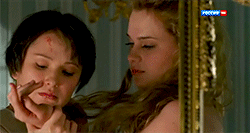
Her husband, Anton Ulrich, is also portrayed in that film, as well as in the tv series Ekaterina.

Karl Peter von Holstein-Gottorp (Peter III Fyodorovich)
The Russian Emperor Peter III was born Duke of Holstein-Gottorp. There are several portrayals of him, the best one (IMO) being the tv series Ekaterina. (His wife, Catherine, was a German princess, but I saw that you already made a gifset of her.)

Also, interestingly (and kind of amazingly) Ekaterina also portrays Peter’s senior chamberlain, Christian August von Brockdorff, a member of a prominent Holstein noble family, who was one of Peter III’s favorites, especially in the mid 1750s.

Wilhelmina Luisa von Hessen-Darmstadt (Natalia Alekseyevna)
Paul I’s first wife was the daughter of Louis IX, Landgrave of Hesse-Darmstadt. She (as well as her two sisters Friederike Luise and Friederike Amalie) are portrayed in the second season of the tv series Ekaterina.

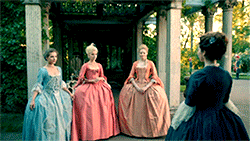
Sophie Dorothea of Württemberg (Maria Fyodorovna)
The second wife of Paul I was also a German princess. She is portrayed in the second season of the tv show Ekaterina, as well as in the tv series Adyutanty Lyubvy (Adjutants of Love) and the movie Bedniy Bedniy Pavel (Poor Poor Paul).
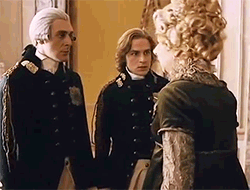
Louise of Baden (Elizaveta Alexeyevna)
Born a German princess, she was the wife of Alexander I of Russia. She is portrayed in the tv series Adyutanty Lyubvy (Adjutants of Love), Severniy Sfinks (Northern Sphinx) and the movie Bedniy Bedniy Pavel (Poor Poor Paul).

Friederike Luise Charlotte Wilhelmine von Preußen (Alexandra Fyodorovna)
She was the daughter of the Friedrich III (later became Nikolai I’s wife). She is portrayed in a couple of different tv shows, the most prominent of which is Bednaya Nastya (Poor Nastya), as well as in the movie The Captivating Star of Happiness.
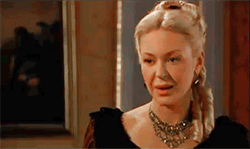
Maximiliane Wilhelmine Auguste Sophie Marie von Hessen (Maria Alexandrovna)
She was born a daughter of Ludwig II von Hessen (later married to Alexander II of Russia). She is portrayed in several tv shows, the more prominent of which are Bednaya Nastya (Poor Nastya) and Institut Blagorodnikh Devits (Institute for Noble Maidens).
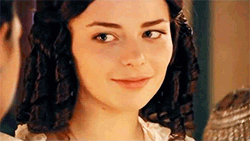
Victoria Alix Helena Louise Beatrice von Hessen (Alexandra Fyodorovna)
Daughter of Louis IV of Hesse (married to Nikolai II). She is portrayed in a lot of stuff lol, the more well-known/accessible ones are probably: Nicholas and Alexandra (1971), Grigoriy R, Rasputin (1996), Rasputin (2011), Mathilde (2017).

25 notes
·
View notes
Text
Philip, Duke of Edinburgh – Wikipedia
Philip, Duke of Edinburgh – Wikipedia
Prince Philip, Duke of Edinburgh (2015)
HRH Prince Philip, Duke of Edinburgh (* 28. Maijul./ 10. Juni 1921greg. Schloss Mon Repos, Korfu, geborener Prinz Philipp von Griechenland und Dänemark[1]), ist der Prinzgemahl der britischen Königin Elisabeth II.
Familiärer Hintergrund und Jugendzeit[Bearbeiten | Quelltext bearbeiten]
Prinz Philip wurde am 10. Juni 1921 als jüngstes Kind von Prinz Andreas von Griechenland und Dänemark und Prinzessin Alice von Battenberg auf Schloss Mon Repos auf der griechischen Insel Korfu geboren. Er hatte vier ältere Schwestern. Er ist der Enkel von König Georg I. von Griechenland und Neffe von König Konstantin I. von Griechenland. Mütterlicherseits ist er Neffe von Louis Mountbatten, 1. Earl Mountbatten of Burma, vormals Prinz Louis von Battenberg, dessen 1917 ins Englische übersetzten Namen Mountbatten er später annahm.
Väterlicherseits entstammt er dem Haus Schleswig-Holstein-Sonderburg-Glücksburg, einer Nebenlinie des Hauses Oldenburg, mütterlicherseits dem Haus Battenberg, einer morganatischen Nebenlinie des Hauses Hessen.
Philips Kindheit und Jugend waren durch innerfamiliäre Konflikte gekennzeichnet. Zum Zeitpunkt seiner Geburt war die Ehe der Eltern bereits gescheitert, was seine sehr emotionale Mutter aber nicht anerkennen wollte. Zwar gingen die Eltern nach einem Militärputsch gemeinsam ins Exil, die Mutter jedoch nach Paris, während sich der Vater eine Wohnung in Monte Carlo nahm und dort mit seiner Geliebten lebte. Die Mutter und ihre fünf Kinder waren auf das Wohlwollen von Verwandten und Freunden angewiesen, da sie selbst nur wenig Geld hatte und von ihrem Mann nicht unterstützt wurde. Während der ersten Lebensjahre Philips begann bei der Mutter eine psychische Erkrankung. Sie zeigte Anzeichen von Schizophrenie und lebte in einer Traumwelt. Schließlich wurde sie auf Druck ihres Bruders Louis Mountbatten in die psychiatrische Klinik Sanatorium Bellevue (Kreuzlingen, Kanton Thurgau, Schweiz) eingewiesen, da sie nicht mehr in der Lage war, zwischen Realität und Schein zu unterscheiden. Da sein Vater Philip nicht aufnehmen wollte, lebte er im Laufe der nächsten Jahre bei diversen Verwandten, so auch bei seinen in Deutschland lebenden Schwestern. Auf Anraten seiner Schwester Theodora, einer verheirateten Prinzessin von Baden, besuchte Philip die neu gegründete Schule Schloss Salem.
Nach der Machtübernahme der Nationalsozialisten wurde Philip auf Internate in Frankreich und Großbritannien geschickt. Seine Mutter sah er im Laufe seiner Jugend nur wenige Male und durfte sie in Sanatorien besuchen; zum Vater hatte er nur schriftlichen Kontakt.
Während des Zweiten Weltkriegs diente er in der britischen Marine. Für seinen Einsatz in der Schlacht bei Kap Matapan auf dem Schlachtschiff HMS Valiant wurde er für besondere Tapferkeit im offiziellen Kriegsbericht erwähnt. Für die Hochzeit mit der damaligen Thronfolgerin Elisabeth musste er 1947 die britische Staatsangehörigkeit annehmen und änderte seinen Namen von Schleswig-Holstein-Sonderburg-Glücksburg in Mountbatten und verzichtete auf seinen Titel Prinz von Griechenland und Dänemark.
Ahnentafel von Königin Elizabeth II.
Zeit als Prinzgemahl[Bearbeiten | Quelltext bearbeiten]
Elizabeth II. und Philip, 1950
Elizabeth II. mit Philip; nach der Krönung, 1953
Prinz Philip und Königin Elisabeth II. beim Staatsbesuch in den USA, 2007
Am 20. November 1947 heiratete er die damalige Prinzessin und Thronfolgerin Elisabeth. Aufgrund seiner militärischen Karriere und seiner Stellung in der königlichen Familie hat Philip unterschiedliche militärische Höchstränge inne:
Daneben ist er, wie bereits sein Onkel Lord Louis Mountbatten (1900–1979), Mitglied des renommierten Savage Club. Im Jahr 2013 feierte er seine 60-jährige Mitgliedschaft im Bund der Freimaurer.[3]Prinz Philip ist der dienstälteste Prinzgemahl in der Geschichte des Königreichs. Der Ehemann von Königin Elisabeth II. hat am 17. April 2009 genau 57 Jahre und 71 Tage der Königin zur Seite gestanden – und damit den bisherigen Rekord von Königin Charlotte gebrochen. Bis zu ihrem Tod im Jahr 1818 war die Gattin von Georg III. 57 Jahre und 70 Tage Prinzgemahlin gewesen.[4]Prinz Philip ist sowohl väterlicherseits als auch mütterlicherseits mit Königin Elisabeth als Cousin dritten Grades verwandt. Aus diesem Grunde steht er in der Thronfolge des Vereinigten Königreichs auf Platz 679[5] – weit hinter seinen Kindern. Königin Victoria war sowohl die Ururgroßmutter von Prinz Philip als auch von seiner Gemahlin Königin Elisabeth.
Als Ehemann der Königin von Australien war Prinz Philip Schirmherr der Olympischen Sommerspiele von Melbourne 1956. Von 1964 bis 1986 war er Präsident der Reitsportvereinigung International Federation of Equestrian Sports; außerdem war er von 1955 bis 1957 Vorsitzender des englischen Fußballverbandes. Prinz Philip spricht fließend Englisch, Deutsch und Französisch. Sein Griechisch ist rudimentär, weil die Familie Griechenland verlassen musste, als er noch ein Kleinkind war. Zusammen mit Friederike von Hannover nahm er Griechischunterricht. Prinz Philip gibt an, Griechisch zu verstehen.[6]Am 2. August 2017 absolvierte er seinen bisher letzten öffentlichen Auftritt.[7] Noch im Jahr 2016 hatte er an 110 Tagen offizielle Verpflichtungen wahrgenommen. Nach offiziellen Angaben war er im Jahr 2017 Schutzherr, Präsident oder Mitglied von insgesamt 780 Organisationen.[8]Ihm zu Ehren ist der Prinz-Philip-Gletscher in der Antarktis benannt.
Medien haben häufig Äußerungen des Prinzen bei öffentlichen Auftritten, besonders im Ausland, als taktlos kritisiert:[9][10] Beispielsweise äußerte er sich gegenüber britischen Studenten in China („Wenn Sie länger hier bleiben, werden Sie alle Schlitzaugen bekommen“)[11] oder Papua-Neuguinea („Sie haben es also geschafft, nicht verspeist zu werden“).[12]Aborigines in Australien fragte er, ob sie noch mit Speeren aufeinander würfen.[13] Auch Bemerkungen Staatsoberhäuptern gegenüber waren despektierlich, so erklärte er dem Präsidenten von Nigeria mit Verweis auf dessen folkloristisch-landesübliche Kleidung: „Sie sehen aus, als wollten Sie gleich zu Bett gehen.“[14] Während der Hannover Messe 1997 begrüßte er Bundeskanzler Helmut Kohl mit den Worten: „Guten Tag, Herr Reichskanzler!“[15] Mit solchen Äußerungen und seiner politischen Unkorrektheit hat er jedoch auch die Sympathien vieler Briten erlangt.
Prinz Philip ist Ehrenpräsident des WWF, manche Naturschützer werfen ihm allerdings Heuchelei in Sachen Artenschutz vor, da er früher selbst Großwildjäger war.
Vorfahren[Bearbeiten | Quelltext bearbeiten]
Kinder[Bearbeiten | Quelltext bearbeiten]
Name
Titel
Geburtsdatum
Ehe
Prince Charles Philip Arthur George
Prince of Wales
14. November 1948
1. Lady Diana Spencer, spätere Princess of Wales, Heirat am 29. Juli 1981, Scheidung am 28. August 1996, gestorben am 31. August 1997.2. Camilla Parker Bowles, Duchess of Cornwall, Heirat am 9. April 2005.
Princess Anne Elizabeth Alice Louise
Princess Royal
15. August 1950
1. Mark Phillips, Captain, Heirat am 14. November 1973, Scheidung am 28. April 1992.2. Timothy Laurence, Vizeadmiral, Heirat am 12. Dezember 1992.
Prince Andrew Albert Christian Edward
Duke of York
19. Februar 1960
Sarah Margaret Ferguson, Heirat am 23. Juli 1986, Scheidung am 30. Mai 1996.
Prince Edward Antony Richard Louis
Earl of Wessex
10. März 1964
Sophie Helen Rhys-Jones, Heirat am 19. Juni 1999.
Enkelkinder[Bearbeiten | Quelltext bearbeiten]
Name
Geburtsdatum
Eltern
Ehen
Peter Mark Andrew Phillips
15. November 1977
Anne, Princess Royal und Mark Phillips
Autumn Kelly, Heirat am 17. Mai 2008.
Zara Anne Elizabeth Phillips
15. Mai 1981
Anne, Princess Royal und Mark Phillips
Mike Tindall, Heirat am 30. Juli 2011.
Prince William Arthur Philip Louis
21. Juni 1982
Charles, Prince of Wales und Diana, Princess of Wales
Catherine Elizabeth Middleton, Heirat am 29. April 2011.
Prince Henry Charles Albert David
15. September 1984
Charles, Prince of Wales und Diana, Princess of Wales
Meghan Markle, Heirat am 19. Mai 2018.
Princess Beatrice Elizabeth Mary
8. August 1988
Andrew, Duke of York und Sarah, Duchess of York
Princess Eugenie Victoria Helena
23. März 1990
Andrew, Duke of York und Sarah, Duchess of York
Lady Louise Alice Elizabeth Mary Mountbatten-Windsor
8. November 2003
Edward, Earl of Wessex und Sophie, Countess of Wessex
James Alexander Philip Theo Mountbatten-Windsor, Viscount Severn
17. Dezember 2007
Edward, Earl of Wessex und Sophie, Countess of Wessex
Urenkel[Bearbeiten | Quelltext bearbeiten]
Name
Geburtsdatum
Eltern
Savannah Anne Kathleen Phillips
29. Dezember 2010
Peter und Autumn Phillips
Isla Elizabeth Phillips
29. März 2012
Peter und Autumn Phillips
Prince George Alexander Louis
22. Juli 2013
William, Duke of Cambridge und Catherine, Duchess of Cambridge
Mia Grace Tindall
17. Januar 2014
Zara und Michael Tindall
Charlotte Elizabeth Diana
2. Mai 2015
William, Duke of Cambridge und Catherine, Duchess of Cambridge
Louis Arthur Charles
23. April 2018
William, Duke of Cambridge und Catherine, Duchess of Cambridge
Lena Elizabeth Tindall
18. Juni 2018
Zara und Michael Tindall
Standarte von Prinz Philip
Seine Königliche Hoheit Prinz Philip von Griechenland und Dänemark (10. Juni 1921–18. März 1947)
Lieutenant Philip Mountbatten, Royal Navy (18. März 1947–18. November 1947)
Lieutenant Sir Philip Mountbatten, KG, RN (18. November 1947–19. November 1947)
Lieutenant-Commander His Royal Highness Sir Philip Mountbatten, KG, RN (19. November 1947–20. November 1947)
Seine Königliche Hoheit Philip, Duke of Edinburgh, KG (20. November 1947–4. Dezember 1951)
Seine Königliche Hoheit Philip, Duke of Edinburgh, KG, PC (4. Dezember 1951–21. April 1952)
Seine Königliche Hoheit Philip, Duke of Edinburgh, KG, KT, PC (21. April 1952–22. Mai 1953)
Seine Königliche Hoheit Philip, Duke of Edinburgh, KG, KT, GBE, PC (22. Mai 1953–22. Februar 1957)
Seine Königliche Hoheit Prinz Philip, Duke of Edinburgh, KG, KT, GBE, PC (22. Februar 1957–10. Juni 1968)
Seine Königliche Hoheit Prinz Philip, Duke of Edinburgh, KG, KT, OM, GBE, PC (10. Juni 1968–15. November 1981)
Seine Königliche Hoheit Prinz Philip, Duke of Edinburgh, KG, KT, OM, GBE, QSO, PC (15. November 1981–13. Juni 1988)
Seine Königliche Hoheit Prinz Philip, Duke of Edinburgh, KG, KT, OM, GBE, AC, QSO, PC (13. Juni 1988–26. Januar 2015)
Seine Königliche Hoheit Prinz Philip, Duke of Edinburgh, KG, KT, OM, GBE, AK, QSO, PC (seit 26. Januar 2015)
Wappen von Prinz Philipp zwischen 1947 und 1949
Das azurblaue Kreuz mit Herzschild stammt aus dem Wappen des Königreiches von Griechenland. Im ersten Viertel ist das Wappen seiner Urgroßmutter Alice, Großherzogin von Hessen und Tochter von Queen Victoria abgebildet. Umgeben ist das Wappen mit dem Strumpfband des Hosenbandordens. Gekrönt ist das Wappen von der Krone eines souveränen Herrschers, diese wiederum vom königlichen Helm, dieser von einer herzoglichen Krone und diese von den fünf Straußenfeder des Hauses von Battenberg. Schildhalter ist der Herkules aus dem dänischen Wappen und der Löwe aus dem hessischen Wappen. Wahlspruch ist ’God Is My Help’, zu Deutsch ‘Gott ist meine Hilfe’. Im ersten Viertel sind die drei Löwen mit den neun Herzen des dänischen Wappens dargestellt. Im zweiten Feld ist das Kreuz von Griechenland abgebildet. Das dritte Feld repräsentiert das Haus von Battenberg. Das vierte Feld steht für Edinburgh. Umgeben ist das Wappen vom Hosenbandorden. Die Helmzier, der Schildhalter und der Wahlspruch sind die gleichen wie im vorangegangen Wappen.
„His Royal Highness The Prince Philip, Duke of Edinburgh,Earl of Merioneth and Baron Greenwich,Royal Knight of the Most Noble Order of the Garter,Extra Knight of the Most Ancient and Most Noble Order of the Thistle,Member of the Order of Merit,Grand Master and First and Principal Knight of the Most Excellent Order of the British Empire,Knight of the Order of Australia,Companion of the Queen’s Service Order,Lord of Her Majesty’s Most Honourable Privy Council,Member of Her Majesty’s Privy Council for Canada.“
Die Prinz-Philip-Bewegung ist ein Cargo-Kult, der von der Bevölkerung des Dorfes Yaohnanen auf der zu Vanuatu gehörenden Insel Tanna betrieben wird. Der Kult verehrt Prinz Philip als eine Gottheit.
↑ Official website of the British monarchy
↑ Lord High Admiral auf Royal.gov.uk
↑ Pro Grand Master’s address – June 2013. In: Quarterly Communication. Freemasonary Today. 12. Juni 2013. Abgerufen am 15. Mai 2014.
↑ SEIT 57 JAHREN PRINZGEMAHL – Prinz Philip bricht Rekord im britischen Königshaus
↑ http://www.wargs.com/essays/succession/2011.html
↑ A strange life-Profile ofPrince Philip
↑ Letzter offizieller Auftritt – Prinz Philip nimmt seinen Hut. Spiegel Online, 2. August 2017, abgerufen am 2. August 2017.
↑ Im Wortlaut: Die Verlautbarung des Buckingham-Palastes. Zeit Online, 4. Mai 2017, abgerufen am 2. August 2017.
↑ Caught on tape: Infamous gaffes (Englisch), BBC. Abgerufen im 3. April 2012.
↑ Wolfgang Koydl: King of Comedy (Deutsch), Süddeutsche Zeitung. Abgerufen im 3. April 2012.
↑ Tim Heald: The Duke: A Portrait of Prince Philip. Hodder and Stoughton, London 1991, ISBN 0-340-54607-7, S. 244 f.; Robert Lacey: Royal: Her Majesty Queen Elizabeth II. Little, Brown, London 2002, ISBN 0-316-85940-0, S. 303.
↑ Prinzgemahl mit eigenwilligem Stil (Deutsch), NZZ Online. Abgerufen im 3. April 2012.
↑ Prinz Philip lästert über Windenergie (Deutsch), Spiegel Online. Abgerufen im 3. April 2012.
↑ Happy Birthday, Prince Painful! (Deutsch), Spiegel Online. Abgerufen im 3. April 2012.
↑ Claudia Bröll: Ihr seht aus wie Draculas Töchter! (Deutsch), FAZ. Abgerufen im 3. April 2012.
Source link
0 notes
Text
gmbh mantel kaufen in österreich Denis Johnsons letztes Buch auf Platz 1 der SWR Bestenliste
gmbh mantel kaufen in österreich Denis Johnsons letztes Buch auf Platz 1 der SWR Bestenliste
Baden-Baden (ots) – Erzählband “Die Großzügigkeit der Meerjungfrau” führt die Liste im Juli/August an / David Szalay und Friederike Mayröcker auf Platz 2 und 3 / Sendung “Die SWR Bestenliste”, 3. Juli, in SWR2
Der Erzählband “Die Großzügigkeit der Meerjungfrau” des im vergangenen Jahr verstorbenen amerikanischen Autors Denis Johnson führt im Juli/August die SWR Bestenliste an, die monatlich von…
View On WordPress
0 notes
Text
NEWS Beitrag von SEO & Google Marketing - Businesspläne - Finanzierungsvermittlung
New Post has been published on http://www.igg-gmbh.de/swrdeutscher-dokumentarfilmpreis-zwoelf-produktionen-nominiert/
SWRDeutscher Dokumentarfilmpreis: Zwölf Produktionen nominiert
nn n n n
Stuttgart (ots) – Heute hat in Stuttgart die Jury für den Deutschen Dokumentarfilmpreis getagt. Aus 113 Einsendungen kamen zwölf Produktionen in die engere Auswahl. Der Preis wird am 30. Juni 2017 im Rahmen des 2017 erstmalig stattfindenden SWR Doku Festivals (28. bis 30. Juni 2017 in Stuttgart) verliehen.
Nominierte Produktionen
Beuys. Buch und Regie: Andres Veiel; Cahier Africain. Buch und Regie: Heidi Specogna; Das Versprechen. Buch und Regie: Karin Steinberger, Marcus Vetter; Democracy. Buch und Regie: David Bernet; Genkingen – ein schwäbisches Volksmärchen. Buch: Eric Papic, Regie: Valentin Kemmner, Eric Papic; Mali Blues. Buch und Regie: Lutz Gregor; Parchim International. Buch: Stefan Eberlein. Regie: Stefan Eberlein, Manuel Fenn; Pawlenski – Der Mensch und die Macht. Buch und Regie: Irene Langemann; Raving Iran. Buch und Regie: Susanne Regina Meures; Somos Cuba. Buch und Regie: Annett Ilijew; Sonita. Buch und Regie: Ghaem Maghami Rokhsareh; Vom Lieben und Sterben. Buch und Regie: Katrin Nemec.
Das SWR Doku Festival
Das SWR Doku Festival findet im Sommer 2017 zum ersten Mal statt. Gefördert wird es durch das Haus des Dokumentarfilms Europäisches Medienforum Stuttgart e. V., die Landeshauptstadt Stuttgart, die LFK – Landesanstalt für Kommunikation Baden-Württemberg Anstalt des öffentlichen Rechts, die MFG Medien- und Filmgesellschaft Baden-Württemberg mbH, die Norbert Daldrop Förderung für Kunst und Kultur, die Stuttgarter Zeitung Verlagsgesellschaft mbH und die Wirtschaftsförderung Region Stuttgart GmbH.
Die Jury
Bettina Böhler, Filmeditorin (\“The Look – Charlotte Rampling\“, \“Barbara\“, \“Wild\“, \“Axolotl Overkill\“); Katrin Bühlig, Drehbuchautorin (u. a. \“Bella Block\“, \“Tatort\“) und Dokumentarfilmautorin (\“Restrisiko\“); Uli Gaulke, Dokumentarfilmautor (\“Havanna mi amor\“, \“Comrades in Dreams – Leinwandfieber\“, \“Goodbye G. I.\“); Oliver Mahn, Geschäftsführer Filmbüro Baden-Württemberg und Festivalleiter Filmschau Baden-Württemberg sowie Indisches Filmfestival, Regina Schilling, Dokumentarfilmautorin ( \“Titos Brille\“, \“Bierbichler\“) und Autorin; Wolfgang Schorlau, Schriftsteller (\“Die schützende Hand\“, \“Am zwölften Tag\“, \“Rebellen\“); Paul Zischler, Produzent (\“Krieg der Lügen).
Große Vielfalt bei Themen und Handschriften Festivalleiter Goggo Gensch zu den Nominierungen: \“Die Nominierungen für den Deutschen Dokumentarfilmpreis und die anderen Preise des SWR Doku Festivals zeigen einmal mehr, wie wichtig der Dokumentarfilm für das Begreifen unserer komplexen Wirklichkeit ist. Diese Filme liefern uns, jeder mit einer anderen Handschrift, einen tieferen Einblick in verschiedenste Zusammenhänge; sie stellen Fragen und zeigen Kontexte auf. Die Nominierungen überzeugen durch die Vielfalt der behandelten Themen.\“
Deutscher Dokumentarfilmpreis 2017
Nominierungen
Beuys
107 Min.; Buch und Regie: Andres Veiel; Produzent: zero one film; Coproduktion: Terz Filmproduktion, SWR, WDR; Deutschland 2017; Filmförderung: Film- und Medienstiftung NRW, Medienboard Berlin-Brandenburg, FFA, BKM, MEDIA, DFFF
Cahier Africain
119 Min.; Buch und Regie: Heidi Specogna; Produzent: Stefan Tolz; Coproduktion: Peter Spoerri (Produzent) PS Film GmbH Schweiz, ZDF 3SAT; Schweiz / Deutschland 2016; Filmförderung: BAK Ministry of Culture, Switzerland Success Cinema Zurich Film Fund Film- und Medienstiftung NRW UBS Foundation George Foundation Amnesty International Switzerland
Das Versprechen
117 Min.; Buch und Regie: Karin Steinberger, Marcus Vetter; Produzent: Filmperspektive Marcus Vetter; Coproduktion: Louise Rosen/ Ulf Meyer, SWR, ARTE, BR; Deutschland 2016; Filmförderung: MFG Filmförderung Baden-Württemberg, DFFF
Democracy
104 Min.; Buch und Regie: David Bernet; Produzent: INDI FILM GmbH; Coproduktion: Seppia, Cedric Bonin, SWR/ARTE, NDR; Deutschland: 2015; Filmförderung: FFA, CNC, MFG Filmförderung Baden-Württemberg, Deutscher Filmförderfonds, Film und Medien Stiftung NRW, Creative Europe MEDIA, Region Alsace, Eurometropole Strasbourg
Genkingen – ein schwäbisches Volksmärchen 50 Min.; Buch: Erol Papic, Regie: Erol Papic und Valentin Kemner; Produzent: Filmakademie Baden-Württemberg; Coproduktion: Servus TV; Deutschland 2016
Mali Blues
93 Min.; Buch und Regie: Lutz Gregor; Produzent: gebrüder beetz filmproduktion Christian Beetz; Coproduzent: zdf/arte; Deutschland 2016; Filmförderung: Film und Medien Stiftung NRW, Creative Media, Medienboard Berlin Brandenburg, FFA, Deutscher Filmförderfonds
Parchim International
90 Min.; Buch: Stefan Eberlein, Regie: Stefan Eberlein und Manuel Fenn; Produzent: Lemme Film GmbH Kathrin Lemme; Deutschland 2015; Filmförderung: Filmförderung Hamburg Schleswig-Holstein, Nordmedia, BKM, Filmbüro Mecklenburg-Vorpommern DFFF
Pawlenski – Der Mensch und die Macht
99 Min.; Buch und Regie: Irene Langemann; Produzent: Lichtfilm GmbH Wolfgang Bergmann; Coproduzent: SWR, Filmstiftung NRW, BKM; Deutschland 2016; Filmförderung: Film- und Medienstiftung NRW, BKM
Raving Iran
84 Min.; Buch und Regie: Susanne Regina Meures; Produzent: Christian Frei Filmproductions GmbH; Coproduktion: ZHdK, Zürcher Hochschule der Künste; Schweiz 2016; Filmförderung: SRF 3Sat, BAK, Bundesamt für Kultur Zürcher, Filmstiftung Katholischer Mediendienst, Alexis Victor Thalberg Siftung, George Foundation, Filme für eine Welt
Somos Cuba – Wir sind Kuba! 90 Min.; Buch und Regie: Annett Ilijew; Produzent: Simone Baumann; Coproduktion: Friederike Freier, Annett Ilijew; Deutschland 2015; Projektentwicklung unterstützt von: Babelsberger Medienpreis; Bremer Filmbüro / Bremische Landesmedienanstalt; Gerd-Ruge-Stipendium der Filmstiftung NRW. Untertitelung unterstützt von German Films.
Sonita
90 Min; Buch und Regie: Rokhsareh Ghaem Maghami; Produzent: TAG/TRAUM Filmproduktion GmbH & Co. KG Gerd Haag; Coproduktion: Aline Schmid, Intermezzo Films (CH), Rokhsareh Ghaem Maghami (IRAN); Deutschland / Schweiz 2015; Filmförderung: BKM, Film- und Medienstiftung NRW, Bundesamt für Kultur (EDI), Cinéforom et Loterie Romande, Chicken & Egg Pictures, IDFA Bertha Fund
Vom Lieben und Sterben
84 Min.; Buch und Regie: Katrin Nemec; Produzent: Tangram International Dagmar Biller; Coproduktion: HFF München; Deutschland 2016; Filmförderung: FFF Bayern
Bei weiteren Fragen wenden Sie sich bitte an die Geschäftsstelle \“Deutscher Dokumentarfilmpreis\“: Telefon 0711 929 13751, E-Mail: [email protected]
Pressekontakt SWR: Daniela Kress, Telefon 07221 929-23800, E-Mail: [email protected]
n
0 notes